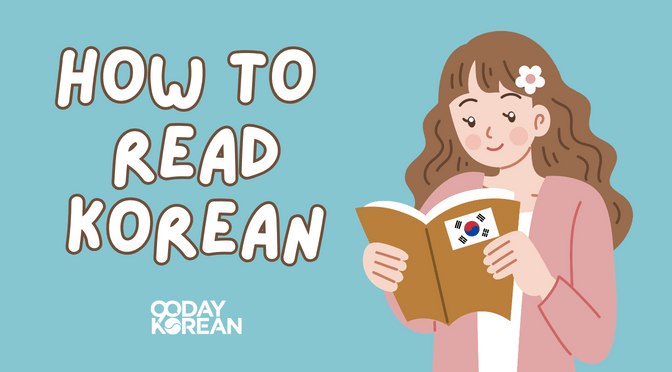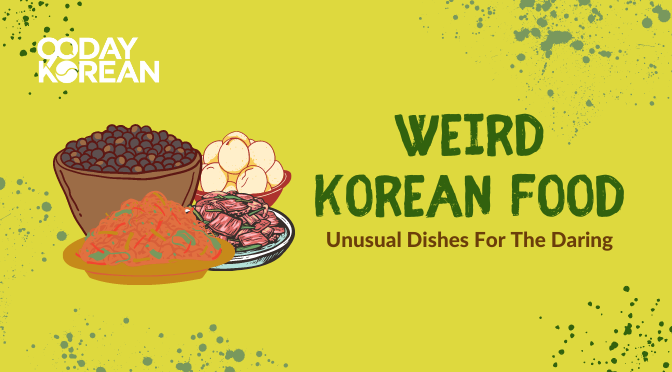If you want to learn how to read Korean, you need to start simple and work your way up. The order should be: Letters, syllables, words, and then sentences.
But actually, in doing so, there are some common mistakes that learners encounter. One of which is relying too much on romanization.
Yes, romanization helps, but there’s a disadvantage to using it over learning Hangeul. We’ll fill you in on what you need to know down below!
In this article, we will give you some simple and handy tips to start reading Korean like a pro. We will go through the basics and some tricks to help make learning fun and easy.
So, whether you’re planning a trip to Seoul or just want to sing along to your favorite K-pop songs, we’ve got you covered. Let’s get started!
Contents
- 1 Quick Summary
- 2 The First 3 Steps in Reading Korean
- 3 How to remember Korean Words
- 4 3 Practical Tips for Reading Korean
- 5 Overcoming 4 Common Challenges of Learning Hangeul
- 6 How to read Korean faster
- 7 The 90 Day Korean Approach
- 8 What to do after you learn how to read in Korean
- 9 Frequently Asked Questions (FAQs)
- 10 Conclusion
Quick Summary
- ✅Mastering the Korean alphabet is your first step towards reading Korean.
- ✅A basic Korean syllable block consists of a consonant and a vowel and can have between 2 to 4 letters.
- ✅Enhance your reading skills by incorporating Korean into your daily life, like labeling household items in Korean or trying to read menus and signs in Korean.
The First 3 Steps in Reading Korean
Are you ready to start learning how to read in Korean? Here are some fun and simple steps to start reading in Korean.
The basic structure of Hangeul
Spend some time getting to know the Korean writing system, Hangeul. Imagine Hangeul characters as a group of new friends you just met. Just like how each friend has their personality, each has its unique sound. Learn the basic characters and the sounds they make. Just like learning any new friends’ names, it’ll take a little bit of practice to remember them all.
If you haven’t yet, you can start learning about the Korean alphabet in this article.
Korean Consonants
There are 14 basic consonants. They are:
| Korean | Romanization |
|---|---|
| ㄱ | g/k |
| ㄴ | n |
| ㄷ | d/t |
| ㄹ | r/l |
| ㅁ | m |
| ㅂ | b/p |
| ㅅ | s(/t) |
| ㅇ | ng/no sound at beginning of a word |
| ㅈ | j/ch |
| ㅊ | ch(/t) |
| ㅋ | k |
| ㅌ | t |
| ㅍ | p |
| ㅎ | h |
On top of the basic ones, there are also Korean double consonants. You can learn more about these letters in detail in this article.
Korean Vowels
Hangeul has 10 basic vowels. They are:
| Vowels | Romanized Spelling |
|---|---|
| ㅏ | a |
| ㅑ | ya |
| ㅓ | eo |
| ㅕ | yeo |
| ㅗ | o |
| ㅛ | yu |
| ㅜ | u |
| ㅠ | yu |
| ㅡ | eu |
| ㅣ | i |
There are also what we call the Korean vowel combinations. These are a combination of two basic vowels above to form a new sound. Learn more about Korean vowels here.
Forming Korean Syllable Blocks
Think of Korean words as little puzzles made of syllable blocks. Each block has at least a consonant and a vowel. Like playing with building blocks, putting letters together, and forming words. It’s a pretty cool system once you get the hang of it!
What’s unique about Hangeul is that the syllable blocks are written in a square shape. The arrangement within a block follows a set pattern: if there’s only a vowel, it appears to the right or below the initial consonant.
A basic syllable block can have a consonant-vowel combination (CV), but many Korean syllables include a final consonant, making the structure consonant-vowel-consonant (CVC). Some blocks include double consonants or vowels.
If the Korean vowel has a long horizontal line, it goes below the initial consonant. e.g. 고, 우
If the vowel has a long vertical line, it goes to the right of the initial consonant. e.g. 마, 너
If there’s a final consonant (or consonants), it is placed below the initial consonant and the vowel.
For example, the Korean word for “Korea” (한국) is made of two syllable blocks that have final consonant: 한 (han) and 국 (guk).
- 한 = ㅎ (initial consonant) + ㅏ (the vowel) + ㄴ (the final consonant)
- 국 = ㄱ (the initial consonant) + ㅜ (the vowel) + ㄱ (the final consonant)
Learning Simple Korean Words and Phrases
Now that you know how to put Korean alphabet characters together, it’s time to make sentences. Begin with simple words and phrases.
Try greetings like “Hello” (안녕하세요) and “Thank you” (감사합니다) or common words like “yes” (네) and “no” (아니요). These will be useful phrases when you start diving into conversations.
How to remember Korean Words
Don’t hesitate to use little tricks like mnemonics to help you remember Hangeul. You can make up stories or images in your head that link the shape of a character to its sound. For example, the letter ㄱ kind of looks like a gun, and it makes a “g” sound. So, you could imagine a gun to remember ㄱ. These funny little tricks can make learning a lot more enjoyable and sticky.
Remember, learning a new language is a journey, so make it fun and enjoy the process. With these strategies, you’ll be reading and writing Korean like a pro before you know it. Happy learning!
3 Practical Tips for Reading Korean
Alright, let’s make reading Korean a piece of cake with some practical tips! 🍰
Incorporate Hangeul Everywhere
Bringing Korean into your everyday life is a great way to get better at reading. How? You can label items around your house in Korean. Your door could have a “문” label, and your fridge might say “냉장고.”
If you’re feeling adventurous, try reading Korean menus when ordering at your favorite Korean restaurant. You can try reading Korean signs that you see. It’s like you’re playing a fun language game in real life!
Listen Up
Reading and listening go hand in hand. You may surprised how much listening to Korean music, watching K-Dramas, or following Korean YouTube channels can boost your reading skills. Recognizing words are easier if you know how they are pronounced. Also, it’s a fun way to get the rhythm and flow of the language!
Tap Into Tech
There are so many cool resources out there to help you practice reading Korean. Language learning apps can start you off with simple phrases. If you are more advanced, some apps offer short stories or news articles. Some apps even let you tap on words you don’t know to see the translation and hear the pronunciation. It’s like having a mini tutor in your pocket!
Remember, the key is to make reading Korean a fun part of your day. Whether you’re labeling household items, jamming to K-pop, watching your favorite shows, or playing on language apps, every little bit of reading practice adds up. Before you know it, you’ll be reading Korean like a pro!
Overcoming 4 Common Challenges of Learning Hangeul
While it’s an exciting journey, there are a few common pitfalls that you might stumble into when learning Hangeul. Here’s how you can avoid them and keep your learning journey smooth:
Mixing Up Similar-Looking Characters
Some Hangeul characters look so similar to each other that you can get them mixed up. For instance, ㄱ (g) and ㅋ (k), or ㅅ (s) and ㅈ (j) might give you a double-take.
How to Avoid: Don’t rush and spend extra time with these tricky pairs. Practice writing them while paying close attention to their shapes. Flashcards can be helpful, too—make it a game to spot the differences!
Tips for distinguishing similar-looking characters
The secret to telling those similar-looking Hangeul characters apart is to play detective and spot their unique features. For example, the letter ㄱ (g) has a sharp angle, while ㅋ (k) has an extra line, making it look like it’s wearing a hat. These little clues will help you tell them apart.
Confusing Assembled Sounds
Sometimes, when certain consonants and vowels are combined, they can sound a bit different than when they’re on their own, or they can create a new sound altogether.
How to Avoid: Practice reading words out loud and listening to native speakers, whether through songs, shows, or language learning apps. By doing this, you’ll get used to how the combined sounds are supposed to be pronounced.
Overlooking the Importance of Stroke Order
It might not seem like a big deal at first, but writing Hangeul characters in the correct stroke order can not only make your handwriting more legible but also actually help you remember them better.
How to Avoid: Use resources that teach the stroke order and practice it. Imagine you are learning a dance routine for each character—once you get the moves down, you won’t even have to think about it.
Relying Too Much on Romanization
Romanization is using English letters to represent Korean sounds. While it is a helpful guide, it can also slow down your progress in truly getting the hang of reading Hangeul.
How to Avoid: Try to immerse yourself in Hangeul as much as possible from the beginning. Label items around your house in Hangeul, switch your phone’s language to Korean, or follow along with Korean lyrics while listening to music.
By watching out for these pitfalls and tackling them head-on, you’ll find yourself reading Hangeul more confidently and enjoying the richness of the Korean language even more. Keep practicing, stay curious, and have fun with it!
How to read Korean faster
If you are already able to read in Korean, great job! But what if you want to go faster? Korean reading practice is the key! Reading out loud can be helpful. Start with simple sentences and move on to more complex ones. The more you do it, the faster you get.
Here are a couple more tips:
- Read Something Fun: Choose topics or stories that interest you so you can have fun. It’ll be easier to stick with it and understand more.
- Use Helpful Tools: Use apps or online resources to help you out. They can be like your trusty sidekick on your reading adventure.
For more useful tips, here’s a separate article that covers various methods on how to read Korean faster. Learning to read Korean is a journey with ups and downs, but with these tips and tricks, you’ll be sailing smoothly in no time. Keep at it, and soon, you’ll be reading Korean like it’s no big deal!
The 90 Day Korean Approach
If your goal is to read Korean like a pro and do it quickly, the 90 Day Korean Approach might be just for you.
Structured Courses for Beginners
90 Day Korean offers a well-organized journey to Korean reading through our structured courses called the Inner Circle Courses. You can build a strong foundation, starting with the basics of Hangeul. From there, you move through levels that are designed to build your skills step by step.
Each level focuses on different aspects of reading Korean, from recognizing letters and sounds to forming words and sentences.
The courses contain hand-picked Korean lessons that cover only the essential parts of the language. All are explained using psychology and stories, so you can’t forget them (even if you tried).
Lessons Just for You
One of the coolest things about this program is how it lets you tweak the lessons to fit how you like to learn. Whether you’re a visual learner or someone who prefers to read and write, the Inner Circle has got you covered.
The materials are flexible, allowing you to learn at your own pace and in your own style. Plus, there are a bunch of extra resources like quizzes, flashcards, and real-life practice tasks that make learning feel like playing a game.
The goal is to get you to read and speak Korean confidently, which will allow you to have a 3-minute conversation in Korean in just 90 days. In the end, you’ll be able to understand those K-Pop lyrics and K-Drama dialogues without peeking at the subtitles.
So, if you’re ready to start your Korean reading adventure, the 90 Day Korean program might just be the perfect guide for you.
What to do after you learn how to read in Korean
Now that you know the fundamentals of reading Korean, here are more resources that you can use for your next steps of learning.
- Korean words – Increase your vocabulary list by learning more useful Korean words.
- Korean sentence structure – Learn how to create sentences correctly and practice reading them.
- How to read Korean faster – If you want to level up your reading speed, check out our tips here.
Frequently Asked Questions (FAQs)
Below, we’ve covered additional questions related to reading Korean.
What is the correct way to read Korean?
Korean is read using Hangeul, the Korean alphabet, which is formed into syllable blocks that are read from left to right and top to bottom.
Is learning to read Korean easy?
Learning to read Korean is considered easy for many learners because Hangeul is scientifically designed with a logical structure. This allows beginners to learn the Korean alphabet quickly, often within a few hours or days.
How to read Korean for beginners?
Beginners should start by learning the individual Hangeul characters, practicing their combinations into syllables, and then progressively reading words and simple sentences.
How do you read Korean sentences?
Korean sentences are read from left to right. Understanding sentence structure typically involves recognizing the subject-object-verb order, which is standard in Korean syntax.
Is Korean read left to right?
Yes, Korean is read horizontally from left to right, similar to English.
Conclusion
Now you know how to read Korean! We’ve also talked about the best way to get started, how to make those tricky characters stick in your brain, and how playing games can actually help you learn faster. Hopefully, you can apply the tips and techniques we taught you in this post.
Ready to start? Take a peek at what 90 Day Korean has to offer. Find out more about the courses here.
Feel free to drop us a comment, ask a question, or share your own Korean learning story. We’d love to hear from you in the comment section below! ^^





